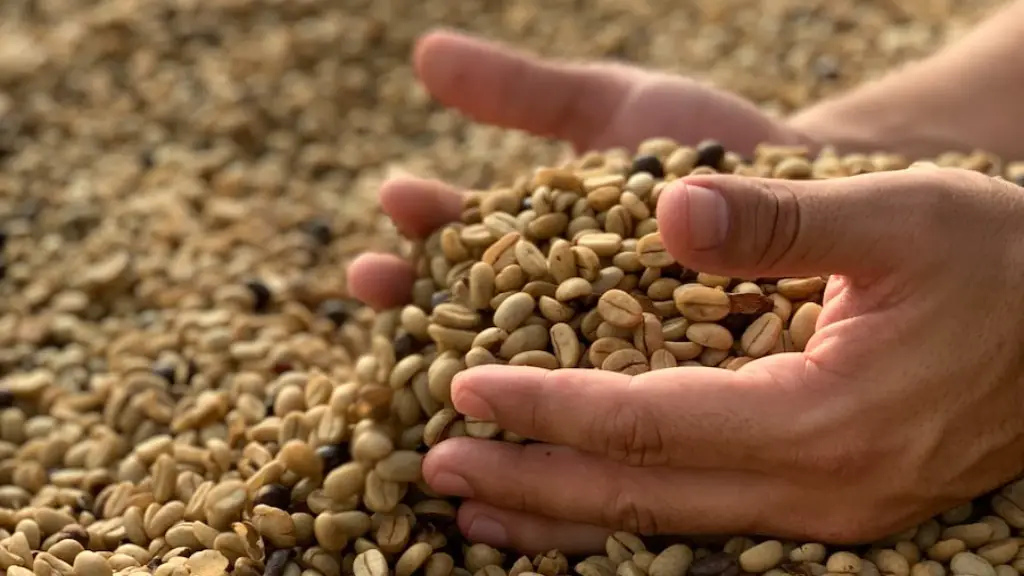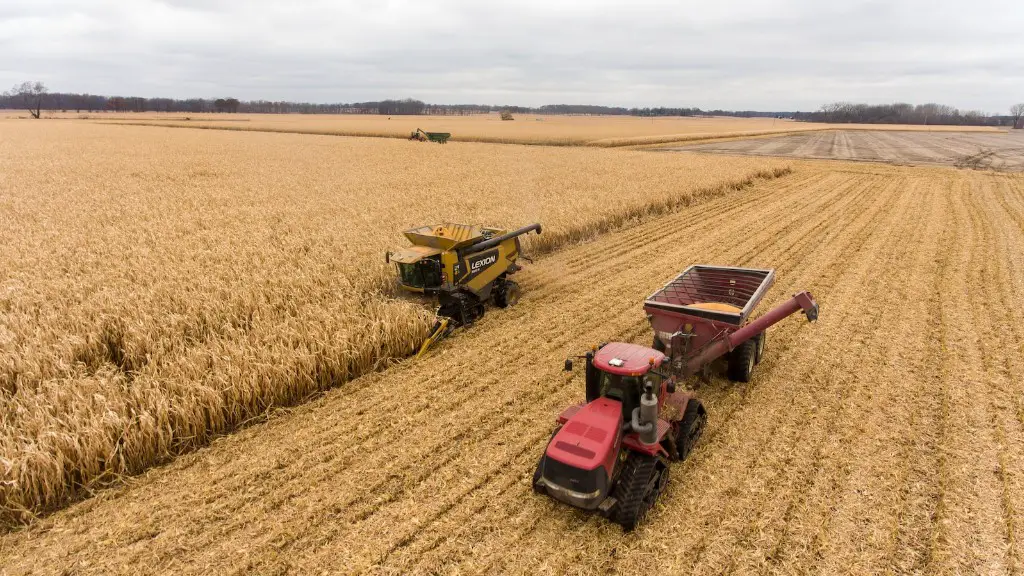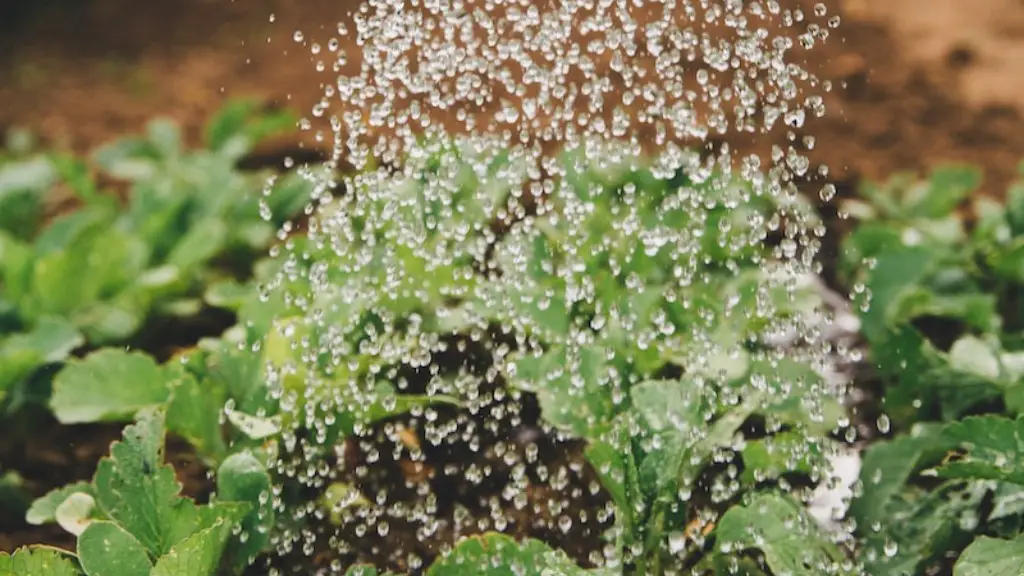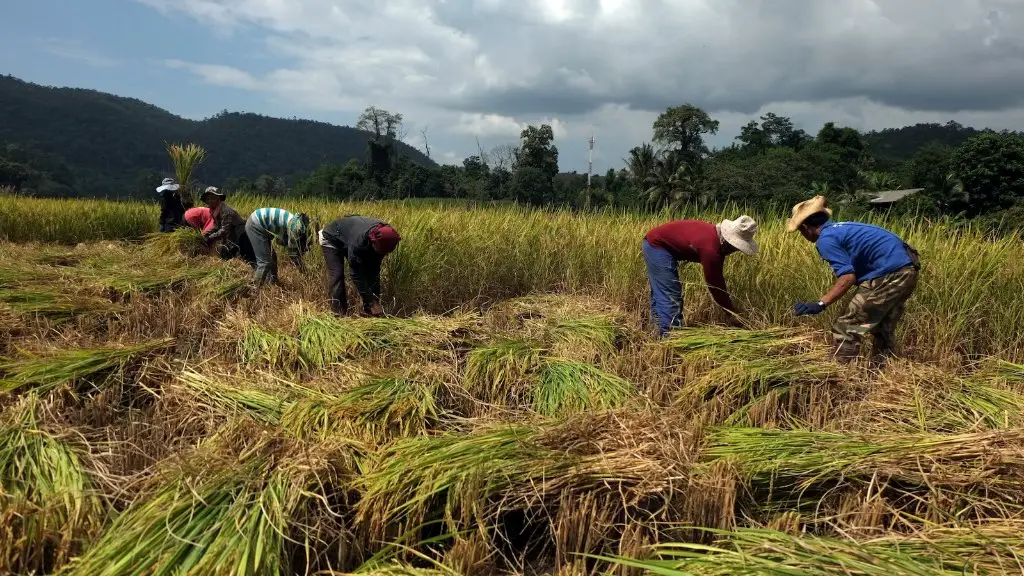The floodplain plays a vital role in the success of agriculture, enabling farmers to take advantage of natural resources. Floodplains provide a rich environment for growing crops by forming their own ecosystem. The fertile soils, water supply, and nutrients help support healthy crop production and quality output. Floodplains are also a big source of food for animals, helping to maintain the balance of the ecosystem.
Floodplains act to reduce the destructive effects of flooding. By absorbing the bulk of the water, they minimise the damage to homes, farmland, and businesses. The floodplain also moderates the flooding’s effects on the local environment. For example, if the land becomes more inundated, more grass and aquatic plants can grow. This helps provide food for local wildlife and keep fish of commercial value healthy.
Floodplains are used as sources of water for crop irrigation and livestock. Without floodplains, farmers would have to depend on other sources such as groundwater or rainwater. Floodplains are generally easier to access and provide a consistent amount of water, allowing farmers to control their crops’ water needs. This helps farmers plan for their harvest and maximize their yields.
Floodplains also provide a rich environment for organisms such as fungi, algae, insects, birds, and fish. These organisms act to break down minerals and nutrients within the soil, enriching the soil and enabling farmland to be used properly and efficiently.
Floodplains act as buffers between streams, rivers and freshwater sources. This helps maintain the water quality of water sources and prevents them from being polluted by agricultural runoff. By reducing the amount of sediment entering water sources, the local environment is kept healthy and clean.
How Human Activity Can Negatively Impact Floodplains
Floodplains are highly susceptible to the impacts of human activity. When the land is developed, the soil loses its ability to absorb high amounts of water. This can result in increased flooding and have a major impact on crop production and biodiversity. In parts of the world where the population is quickly growing, floodplains can be overwhelmed by the volume of water that needs to be processed.
Floodplains can also be impacted by agricultural activities, including overgrazing, deforestation, and use of fertilisers. Overgrazing can lead to soil erosion, loss of plant life, and degradation of the land’s soil, while deforestation can limit the flow of water, reduce the land’s ability to soak up water, and increase runoff and flooding.
The use of fertilisers can also have a major impact on the health of a floodplain. Fertilisers can increase the amount of nutrients in the soil and lead to the formation of algae in the water, further degrading the water quality. In addition, fertilisers can also lead to contamination of the water and air with harmful chemicals, which can have negative impacts on the environment.
What Can We Do To Protect Floodplains?
There are a number of ways that we can protect floodplain ecosystems and ensure that they remain healthy and productive. These include reducing urban sprawl and encouraging thoughtful and responsible development, incorporating floodplains into local planning and zoning, limiting industrial and agricultural activities, and increasing funding for research into the protection of floodplains.
In addition, we can also implement measures such as installing river and stream flow monitoring systems to reduce the risk of flooding, tree planting to reduce soil erosion, and providing education and training on how to use and care for floodplains.
We can also help restore and maintain floodplains by planting native species, encouraging the use of aquaculture, and increasing public awareness of the important role that floodplains play in the ecosystem.
The Benefits Of Protecting Floodplains
By protecting floodplains, we can help ensure that the environment remains healthy and productive. A healthy floodplain will continue to provide food and shelter for wildlife, support agricultural production and create opportunities for recreation, such as fishing, swimming, and boating.
Protecting floodplains can also help reduce the risk of flooding, reduce the amount of sediment that enters water sources, and prevent the contamination of local water supplies. In addition, the protection of floodplains can help reduce the spread of aquatic pests and diseases, increase the water quality of streams and rivers, and contribute to the overall health of the environment.
The Importance Of Sustainable Management Of Floodplains
We need to ensure that floodplains are managed sustainably in order to maintain their health and productivity. Sustainable management of floodplains includes careful monitoring of water levels, controlling the amount of runoff entering the floodplain, and limiting the use of fertilisers. In addition, it is important to undertake regular maintenance of the floodplain, such as the removal of sediment and weeds.
It is also important to ensure that local planning authorities adopt long-term management measures that protect the environment, preserve the natural environment, and ensure that the floodplain continues to provide benefits to the local community.
Conclusion
Floodplains have an important role to play in the success of agriculture. They provide a rich environment for growing crops, moderate the effects of flooding, provide a source of water for crop irrigation, and act to protect drinking water sources. However, human activity can have a negative impact on floodplains, so it is important that we take action to protect them.
Protecting floodplains will help to ensure that they remain healthy and productive, while also providing environmental benefits such as reduced risk of flooding, improved water quality, and greater biodiversity. Furthermore, it is important that floodplains are managed sustainably, in order to maintain their health and productivity over the long term.




